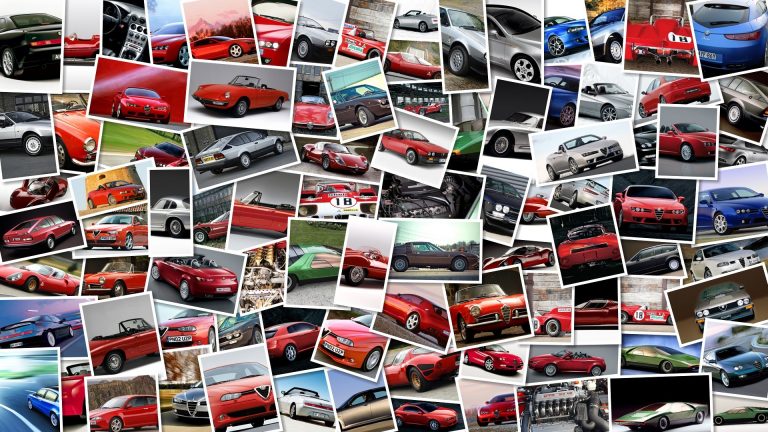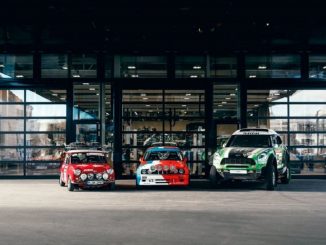
We have spent the last few days in Germany, at the Mercedes–Benz Brand Workshop which took place at their Stuttgart headquarters.
Together with other bloggers from all around the world, we were invited there in order to better understand the Mercedes brand as well as all the behind-the-scene work that provides the basis for a successful production.
During the workshop, we’ve been walked through 125 years of history ranging from Daimler, Benz and Maybach’s past epic adventures to the implementation of today’s high-tech systems.
With the aim of learning from the past as well as to understand this industry’s future needs, we also visited the Mercedes–Benz Museum in Stuttgart, the Mercedes–Benz Design Center in Sindlefingen and the Malmsheim race track.
The Past: The Mercedes–Benz Museum in StuttgartIt’s astonishing to see what Daimler and Benz managed to accomplish during their lives and in our opinion, the Mercedes–Benz Museum in Stuttgart has no competition when it comes down to highlighing the automotive industry’s milestones.
Established in 2006 and designed by the UNStudio of Dutch architects van Berkel and Bos (Amsterdam), this Museum – those shape is inspired by the DNA’s double helix structure – includes the inheritance left by two different past exhibitions: a collection from 1923 and the 75th Anniversary of Automotive History (1960s).
16,500 square meters divided in 9 different levels boasting 160 invaluable vehicles: the Mercedes–Benz Museum is one of a kind.
But don’t let these numbers scare you: it’s suitable for all age-groups since there are different options available to visitors, who can choose between a selection of routes ranging from 1,5 to 5 Km.
Starting from the top floor, we began our journey through history with William II, who famously declared “I believe in horses, cars are a temporary phenomena” indeed displaying little foreseeing qualities.
Nevertheless, we can’t really blame him: judging from the models belonging to that era, who would have thought that such noisy, smelly and honestly quite ugly means of transportation could go this far.
The 29th January 1886 – the day on which Carl Benz received the patent for the world’s very first car – is considered the day on which the automobile was born and the first vehicle on display had to be a four-wheel model by Carl Benz, dated 1886.
Although astonishingly innovative at the time, this car is almost unthinkable within today’s standards due to the fact that its 954 hp supply 0,55 kw, allowing a maximum speed of only 16 km/hr.
Slower than a horse and everything but appealing: back then a driver’s life wasn’t an easy one.
Vehicles not only had many technical issues involving engine, suspension and wheels, they also lacked of any comfort-related feature.
Luckily, innovation was just around the corner and we soon saw this four-wheeler turning into something that more resembles a car as we know it, followed by trucks and aircraft engines.
The trip down memory lane then took us through the 1940s, the post war period, the 1960’s, up until today.
We are going to spare you the list of all the vehicles we had the privilege to view because it’s something that should be experienced in person.
We can tell you that it’s been interesting to observe in particular the changes made through time in regards to cars’ cooling systems, as well as to see how the steering has become more comfortable by ditching the vertical position for a more tilted one.
It’s also been a pleasure to follow the progress made by all the different engineers in terms of ideas and technology: many objects, functions and positions that today we take for granted come from long periods of hard work and countless attempts.
Having the whole range of Mercedes vehicles right in front of us really made us realise the real extent of the incredible effort made by these man in order for us to enjoy the quality we are now accustomed to.
View the full Mercedes Museum Photo Gallery The Present: The Designers Hans-Dieter Futschik and Martin BremerMoving on to the Mercedes–Benz Design Center in Sindlefingen, designed by the Italian Renzo Piano in 1997, we are greeted by Hans-Dieter Futschik who kindly explains to us why our phones, photo and video cameras have been temporarily confiscated: circulation must be limited to official Mercedes shots.
He also explains how the design team is organized: there are 500 staff members coming from 20 different countries and working in 9 different locations – six of them dedicated to cars, three dealing with commercial vehicles.
Tradition, quality and balance, all with a pinch of attitude: these are the key-concepts on which the Mercedes design is based on.
Despite having to deal with international markets’ different taste, needs and expectations, the designers have managed to please everyone both in terms of colour and shapes.
Black and silver are currently the most chosen tones – with younger customers surprisingly opting for such traditional colors as well – while in Asia and the US white is particulary requested.
In addition, with the current signature feature – the dropping line on the side of the bodywork – Mercedes has given a fresh and sporty touch to all the latest models.
From a technical point of view, techniques usually employed in the Hollywood film industry have been applied to develop new concepts.
In fact, the development of new software has allowed the fast rendering of car models within a virtual environment that mimics real life, which has helped reach new standards in terms of design.
We asked Futschik what Mercedes’ secret is, and in particular, how it happens that despite working with an international team based in different locations around the world, the public still perceives the Mercedes brand as German.
He replied:“It’s true, and it all depends on how you work.
We come from a long tradition, we respect our history and we evolve keeping it in mind.
In addition, the people that work for us are highly motivated not only by the brand, but by the tradition it represents.
At the end, this results in the final product being perceived as German.
”Later on we also had the chance to meet Martin Bremer, the dedicated designer in charge of Mercedes’ interiors, who explains the meticulous work carried out before a final decision is made.
And to look for innovative fabrics, for new trends as well as to research on materials’ long-term availability and resilience is all part of his job.
He showed us all the latest Mercedes features in terms of interiors: the different fabrics, how leather is handled, the different kind of stiching techniques.
A curiosity: did you know that in the past, leather seats weren’t considered a luxury feature at all? Aristocrats back then opted for soft fabrics to display their priviledged status, while leather was relegated only to the driver seat, which was usually exposed to the elements.
Today the situation is much different and designers are more focused on eco-friendly materials – such as wood and weaved banana leaves – which always come from man-made cultivations in order to spare virgin forests.
View the full Sindlefingen Mercedes–Benz Design Center Photo Gallery The Future: Alexander MankowskyThe person in the above picture is Alexander Mankowsky: sociologist, philosopher, psychologist but most of all, Daimler AG’s futurologist.
His job is to study the evolution of the concept of automobile in order to develop the brand’s future strategies.
He has to study the past to guess the future, basically, which is an innovative concept itself.
Automobiles reflect the developments made by society.
To corroborate this is enough to point out that after WW II, nuclear energy seemed to be the best option for everything and of course, the concept of nuclear-power fuelled vehicles seemed also very appealing at the time.
The influence of space programmes on the automotive industry also cannot be ignored: the progress made in the space exploration field has been mirrored by cars’ new stylistic approach, with dynamic and fluid lines replacing the rigid shapes of the past.
Automobile also means speed, which is a factor that for many makes driving fascinating.
Today’s standards have enabled drivers to enjoy the thrills of speed while in the past there was not such a thing, since vehicles were very slow.
Fast driving can be seen as the will to break from the past and to demonstrate the progress made by men, nevertheless safety concerns cannot be overlooked.
Pollution is also something that makes us different from past generations.
We are more aware of the fact that our actions have repercussions on the environment we live in therefore issues such as global warming and emissions levels have become key-factors for these last generations, more then ever concerned for this planet’s future.
So how the Futurologist sees the future? He thinks that the ideal solution would be a waste-free global system where everything is recycled, just like it happens in nature.
In the same time people should steadily ditch fossil fuels, switching to alternative, greener energy.
Is it utopian? Judging from Mercedes’ future plans, maybe not.
The Malmsheim Road TrackWe’ve just arrived at the Mercedes’ road track in Malmsheim, which is a small track belonging to a tiny airport used only by tourists’ aircrafts.
The vehicles made available to us are plenty, but time is running short therefore we have to carefully select which cars to test drive.
We begin with an electric Smart, which we are able to test on roads open to traffic.
Despite being quite small, its weight is slightly penalising when building up speed after a stop.
It’s maximum speed is of 100 Km/hr and driving it is the same as driving another Smart, very comfortable, almost like driving a golf-kart.
Same for the Mercedes A-Class E-Cell: despite being an electric vehicle with a 70 kw engine, there’s no tangible difference if we compare it with a traditional A-Class.
Much more silent than a Smart, this car behaves quite remarkably when accelerating.
A special mention goes to the C63 AMG Twinturbo: when starting it up, its roar was music to our ears.
We soon switched the Eco-mode off, in favour of a more sporty suspension setting in order to try out the 7-speed AMG Speedshift MCT gearbox properly.
On the highway we let the 525 HP engine run free and we managed to reach the 250 km/hr mark without noticing any issue.
With all vehicles, we had the chance to try out the anti-slip system on wet tarmac as well as the automatic braking system which kicks in when the cruise control is enabled.
Very helpful, in our opinion, especially considering that if the car comes across an unpredictable obstacle, it slows down by itself after some warning sounds and a slight tightening of the seat-belts.
View the full Malmsheim Roadtrack Photo Gallery









